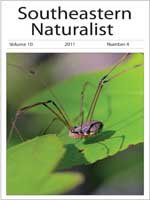As human populations encroach on more remote areas, tree plantations are frequently converted into suburban developments or conservation lands. The purpose of the current study was to compare the effects of restoration treatments on the abundance and biodiversity of two former pine plantations in northeast Florida. Restoration methods, which varied greatly in both environmental impact and effort from minimal (non-manipulated control plots) to thinned (removal of 90–97% of Slash Pines and exotic plant species) to cleared (mechanical removal of all vegetation to the substrate surface), were compared using replicated 100-m2 plots. Although sites exhibited variation in plant densities and relative guild abundance, restoration treatment produced a significant increase in plant abundance and relative composition of plant guilds. Plant abundance was 2–3 times higher in cleared plots compared to thinned and control plots, respectively; not surprisingly this was because cleared plots had large numbers of small herbaceous seedlings as well as a shift in their plant communities to graminoid species, which are typically less shade tolerant than other plant guilds. Moreover, the relative abundance of vines was substantially lower in cleared plots compared to control and thinned plots, which retained all or some of their tree and shrub cover, thereby providing support structure for climbing plants. While plant diversity (Shannon index) exhibited a significant time-by-treatment interaction because cleared plots initially had only 65–80% of the plant diversity compared to control and thinned plots, cleared plots reached or exceeded them in biodiversity by the last two sampling dates, although cleared plots at one site showed a large decline on the final sampling date. In general, both study sites reflected high levels of graminoids in cleared plots, while thinned plots showed more even increases across plant guilds. Lastly, pine tree diameter (i.e., plant growth rate) was greater and canopy cover was lower in thinned plots compared to controls, although the differences were only significant for one site. Results from this study indicate that thinning former pine plantations with selective removal of exotics will provide maximal plant biodiversity and tree growth rather than utilizing more cost- and labor-intensive clearing of sites.
How to translate text using browser tools
1 December 2011
Restoration of Plant Communities in Former Pine Tree Plantations
Anthony M. Rossi,
Ryan C. Meyer,
Keith Stokes,
Daniel C. Moon
ACCESS THE FULL ARTICLE

Southeastern Naturalist
Vol. 10 • No. 4
December 2011
Vol. 10 • No. 4
December 2011




